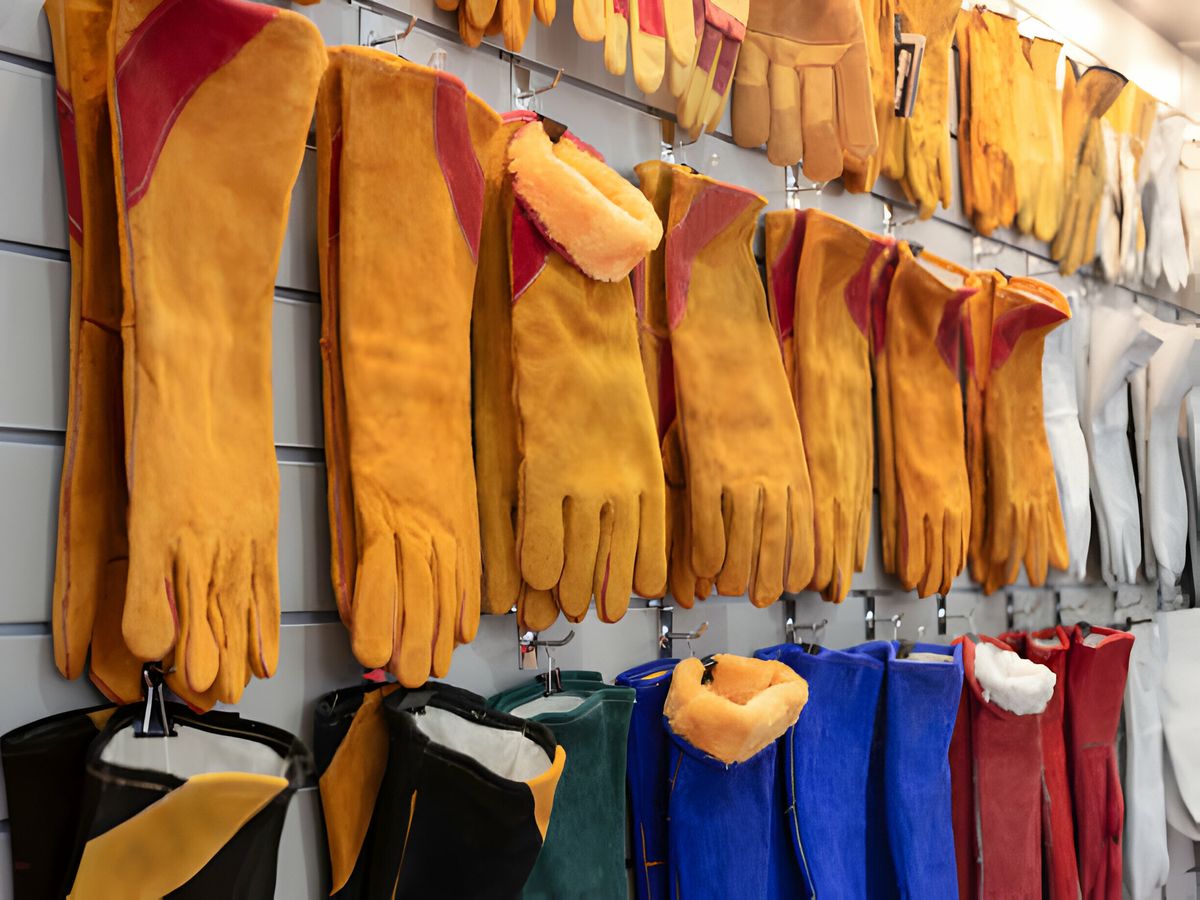Freezer gloves are tailored hand coverings crafted to insulate and shield in frigid settings like industrial freezers or wintry outdoors. These specialized garments ensure warmth and safeguard against frostbite, vital for tasks requiring manual dexterity. In professions exposed to sub-zero temperatures, such as cold storage facilities, freezer gloves are indispensable safety gear. They not only preserve worker comfort but also enhance productivity and prevent health risks associated with extreme cold.
Importance of Freezer Gloves in Cold Environments
The importance of freezer gloves in cold environments cannot be overstated. These gloves act as a barrier against freezing temperatures, preventing frostbite and maintaining dexterity for tasks that require manual precision. In professions where workers are exposed to sub-zero temperatures, such as in food processing or cold storage facilities, freezer mitts are essential safety gear to ensure worker comfort, productivity, and, most importantly, health.
Purpose of the Article
The purpose of this article is to highlight the significance of freezer gloves in cold environments and underscore their role in safeguarding workers from the adverse effects of extreme cold. By exploring the features, benefits, and applications of freezer gloves, readers will gain a deeper understanding of why these specialized hand coverings are indispensable in chilly work settings.
Understanding Freezer Work Environment
Explanation of Working Conditions in a Freezer
Working conditions in a freezer entail exposure to extremely low temperatures, often well below freezing. Employees in such environments face prolonged periods of cold, which can be physically demanding and uncomfortable. Tasks may include handling frozen goods, operating machinery, or performing inventory checks, all of which require precise manual dexterity.
Risks Associated with Cold Temperatures
The risks associated with cold temperatures in freezer work environments are significant. Prolonged exposure to extreme cold can lead to frostbite, where the skin and underlying tissues freeze, causing damage and pain. Additionally, cold temperatures can increase the risk of hypothermia, a potentially life-threatening condition characterized by a dangerously low body temperature. These risks are exacerbated by factors such as inadequate clothing or prolonged exposure without breaks.
Importance of Proper Protection
Proper protection is paramount in freezer work environments to mitigate the risks posed by cold temperatures. This includes wearing appropriate clothing such as insulated jackets, pants, and, crucially, freezer gloves to protect the hands. Proper insulation helps retain body heat and prevents frostbite. Employers should also provide regular breaks in warmer areas to allow employees to warm up and ensure they are adequately trained in recognizing and responding to cold-related hazards.
Factors to Consider When Choosing Freezer Gloves
Insulation Material: The insulation material of freezer gloves is crucial for providing warmth and protection against cold temperatures. Materials such as fleece, Thinsulate, or synthetic insulation offer effective thermal properties to keep hands warm without adding excessive bulk.
Grip and Dexterity: Freezer gloves should allow for sufficient grip and dexterity to handle objects and perform tasks effectively. Features like textured palms or silicone grips enhance grip, while pre-curved fingers and flexible materials maintain dexterity for intricate tasks.
Comfort and Flexibility: Comfort is essential for prolonged wear in freezer environments. Gloves with soft linings, adjustable cuffs, and ergonomic designs enhance comfort, while flexibility ensures ease of movement and reduces hand fatigue during extended use.
Durability and Longevity: Freezer gloves must withstand harsh conditions and frequent use. Durable materials, reinforced seams, and abrasion-resistant coatings contribute to the longevity of gloves, reducing the need for frequent replacement and ensuring cost-effectiveness.
Compliance with Safety Standards: Freezer gloves need to meet relevant safety standards to ensure protection against cold-related hazards. Compliance with standards such as EN 511 for protective gloves against cold is crucial to guaranteeing the gloves’ effectiveness in extremely cold environments and ensuring worker safety.
Best Freezer Gloves for Different Needs
Best Overall: The top pick for freezer gloves offers a balance of insulation, durability, and dexterity, providing comprehensive protection and comfort in cold environments.
Best Budget: These freezer gloves offer cost-effective cold protection without compromising on essential features, making them ideal for those seeking affordability without sacrificing quality.
Best High-Dexterity: These freezer gloves prioritize flexibility and grip, allowing for intricate tasks and precise movements while still providing adequate insulation against cold temperatures.
Best Insulated: Known for superior thermal properties, these freezer gloves excel in keeping hands warm even in the coldest conditions, ensuring comfort and protection during extended use.
Best Waterproof: Designed to repel moisture and maintain dryness, these freezer gloves offer reliable protection against wet conditions, making them suitable for environments where exposure to liquids is common.
Mastering Cold Work Environments with Freezer Gloves
Common Industries and Professions Requiring Freezer Gloves
Freezer gloves are essential in various industries and job roles where exposure to cold temperatures is common. They are widely used in food processing to handle frozen goods, in cold storage facilities for inventory management, in pharmaceuticals for handling cold-sensitive materials, in construction for outdoor work in winter, and in outdoor winter activities such as skiing or snowboarding to keep hands warm and protected.
Health Risks Associated with Cold Exposure
Prolonged exposure to cold temperatures poses significant health risks, including frostbite, where skin and tissues freeze, leading to tissue damage and pain. Hypothermia, characterized by dangerously low body temperatures, can result in confusion, fatigue, and even death if untreated. Cold-induced injuries such as chilblains and trench foot can also occur, potentially causing long-term complications and affecting overall well-being.
Ergonomic Design Features of Freezer Gloves
Ergonomic design elements in freezer gloves, like pre-curved fingers, ensure a natural hand shape, reducing strain and fatigue during use. Articulated knuckles allow for unrestricted movement, enhancing dexterity for precise tasks. Adjustable cuffs provide a customized fit, sealing out cold air and moisture while preventing the gloves from slipping. These features collectively maximize comfort and performance in cold environments.
Innovations in Freezer Glove Technology
Recent advancements in freezer glove technology include innovative insulation materials like aerogel or phase change materials, providing superior warmth without added bulk. Enhanced grip coatings offer better traction on surfaces, improving the handling of objects in cold environments. Touchscreen compatibility enables users to operate devices without removing gloves, while smart features like temperature monitoring enhance user safety and comfort in extreme conditions.
Regulatory Compliance and Standards
EN 511 is a key safety standard for freezer gloves, specifying requirements for protection against cold conditions. Compliance ensures gloves meet rigorous testing criteria for thermal insulation, contact cold resistance and water permeability. Adherence to such standards guarantees quality and reliability, assuring users that the gloves offer effective protection in cold environments while maintaining durability and performance.
Case Studies or Testimonials
Workers in cold storage facilities commend freezer gloves for warmth and dexterity, vital for handling frozen goods efficiently. Challenges like condensation buildup on gloves during rapid temperature changes are noted. Proper glove selection and usage are emphasized for comfort and safety. Users stress the importance of gloves meeting EN 511 standards to ensure reliable protection in extremely cold conditions.
Environmental Considerations
Freezer glove production may contribute to environmental issues through energy consumption and waste generation. However, selecting sustainable materials like recycled or biodegradable fibers can mitigate environmental impact. Eco-friendly disposal methods, such as recycling or composting, further reduce waste. Promoting reusable glove options and implementing energy-efficient manufacturing processes align with sustainability goals, fostering eco-friendly choices in the industry.
Training and Education
Proper training and education for workers using freezer gloves are crucial for ensuring safety and effectiveness. Instruction on correct glove usage, including proper fit and adjustment, minimizes the risk of injury and maximizes insulation. Workers also need guidance on glove maintenance to prolong lifespan and performance. Training should emphasize recognizing signs of cold-related injuries to prompt timely intervention and prevent serious health issues.
Tips for Proper Usage and Maintenance of Freezer Gloves
Proper Fit and Sizing: Ensure freezer gloves fit snugly but not too tightly, allowing for comfortable movement without restricting blood flow. Proper sizing prevents cold air from seeping in and maximizes insulation effectiveness.
Regular Inspection for Wear and Tear: Routinely examine freezer gloves for signs of wear, such as fraying seams or thinning insulation. Addressing minor damages promptly can prevent further deterioration and maintain optimal protection against cold temperatures.
Cleaning and Storage Guidelines: Follow the manufacturer’s instructions for cleaning freezer gloves, typically involving gentle hand washing with mild detergent and air drying. Avoid exposing gloves to high heat sources, as this can damage materials. Store gloves in a dry, cool place away from direct sunlight to prevent deterioration.
Replacement Schedule: Establish a replacement schedule based on frequency of use and wear. As freezer mitts endure harsh conditions, they may lose effectiveness over time. Replace gloves when signs of significant wear or reduced insulation become apparent to ensure continued protection for hands in cold environments.
Conclusion
In conclusion, freezer gloves play a vital role in safeguarding workers from the harsh conditions of cold environments. They provide essential insulation and protection against frostbite and other cold-related risks, ensuring worker comfort, productivity, and health. By considering factors such as insulation material, grip and dexterity, comfort and flexibility, durability and longevity, and compliance with safety standards, individuals can choose the best freezer mitts to suit their specific needs. Regular maintenance and replacement schedules further contribute to maximizing the effectiveness of freezer gloves in providing reliable cold protection. Overall, investing in high-quality freezer gloves is essential for maintaining safety and efficiency in cold work environments.















Leave a Reply